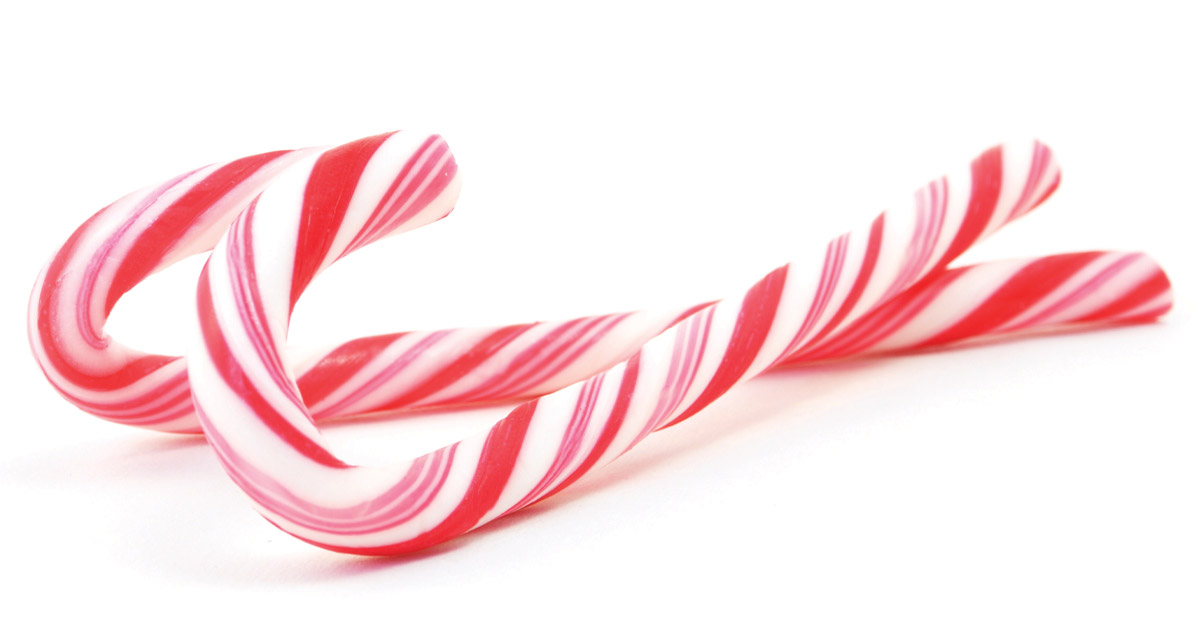It’s difficult to imagine Christmas without these sweet treats! They grace the festive tables and decorate Christmas trees at many a home and business. Decorate your Christmas tree with them, tuck them into your stockings hung above your fireplace, decorate your presents with them, and take a stroll down Candy Cane Lane this holiday season.
SWEET TREATS YOU CAN’T BEAT
Candy canes are fun dipped in hot chocolate, tea, or coffee. Crush them up and sprinkle them over ice cream and other desserts like brownies and cheesecake. Lots of candy cane recipe ideas are easily found online.
A HISTORICAL LOOK AT CANDY CANES
Explore the roots, origins, and history of these sweet treats and learn some fun and fascinating facts. The “J” shape of the candy cane is for Jesus and the two colors intertwined together are symbolic – white standing for purity and holiness and red representing the blood Jesus Christ shed on the cross for us. One popular story is that a choirmaster bent the candy sticks to look like a shepherd’s staff, as a reminder of the shepherds who visited the baby Jesus, to keep a rowdy choir of kids occupied with sugar sticks during the Christmas nativity scene. These sweet treats first appeared in hooked form around 1670. Lucky for our Christmas trees, candy canes are the perfect shape to hang off the fir boughs.
FASCINATING FACTS ABOUT CANDY CANES
- According to the National Confectioners Association, the first documented use of candy canes to celebrate Christmas was in 1847 when German Swedish immigrant August Imgard decorated a blue spruce tree with candy canes and paper ornaments.
- Annually, there are nearly 2 billion candy canes produced in America, and 90% are sold between Thanksgiving and Christmas.
- Happy National Candy Cane Day! This special holiday is celebrated the day after Christmas, on December 26.
- Candy canes were made by hand until Brasher O. Westerfield invented a machine in 1921.
- The world’s largest candy cane was built by Chef Alain Roby of Geneva, Illinois, in 2012. It was 51 feet long, required 900 lbs. of sugar, and later was smashed with a hammer so people could take the pieces home.
- The average candy cane contains 50 calories, is 5 inches and weighs an ounce.
- The original candy canes were just straight sticks, without the bend.
- Candy canes used to be all white, not striped, as seen on Christmas cards before the 1900s.
- The peppermint in candy canes has some health benefits, including aiding digestion, curbing cravings, clearing nasal passages, easing headaches, and of course, making breath fresh.
SUCKER VS. CHEWER
Some people prefer their candy canes to dissolve slowly in their mouths, savoring the flavor, while others bite right in and get a surge of flavor in every chew. A whopping 54% of kids suck on candy canes, whereas 24% crunch them. Presumably, the remainder do a little of both. How do you enjoy your candy canes?
FLAVORS OTHER THAN PEPPERMINT
Peppermint may be the main staple that has become a part of the Christmas tradition, but how about other flavors? You might want to try flavors of candy canes you never knew existed. They’re a lot like Bertie Bott’s jelly beans from the famous Harry Potter, but these are real! Pucker up with pickle candy canes in which you can taste the dill, or try flavors ranging from bacon to gravy to spicy sriracha, wasabi, and even clam! Who knows – they might be appetizing, and they certainly are interesting. Other unusual flavors include cinnamon, sugar plum, apple pie, coffee, coal, Oreo, sodas (especially A & W Root beer, Orange Crush and Dr. Pepper), Swedish Fish, Sour Patch Kids, blueberry, cherry, green apple, orange, Klondike, Neapolitan, mint chocolate and cookies and cream. Or, how about bacon and mac and cheese? Other nontraditional flavors include birthday cake (time to celebrate!), bubble gum, huckleberry, and rotisserie chicken.
Whether you’re using them for decorating or desserts, make candy canes a special part of your holiday season. Experiment in pleasing (or surprising) your palette with other flavors and discover your favorites. Give some away to your loved ones, put them on packages, and Christmas trees, but don’t forget to keep some for yourself!























